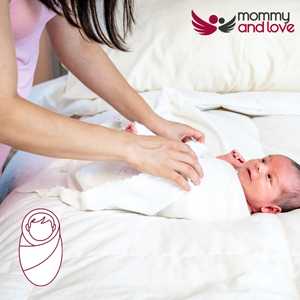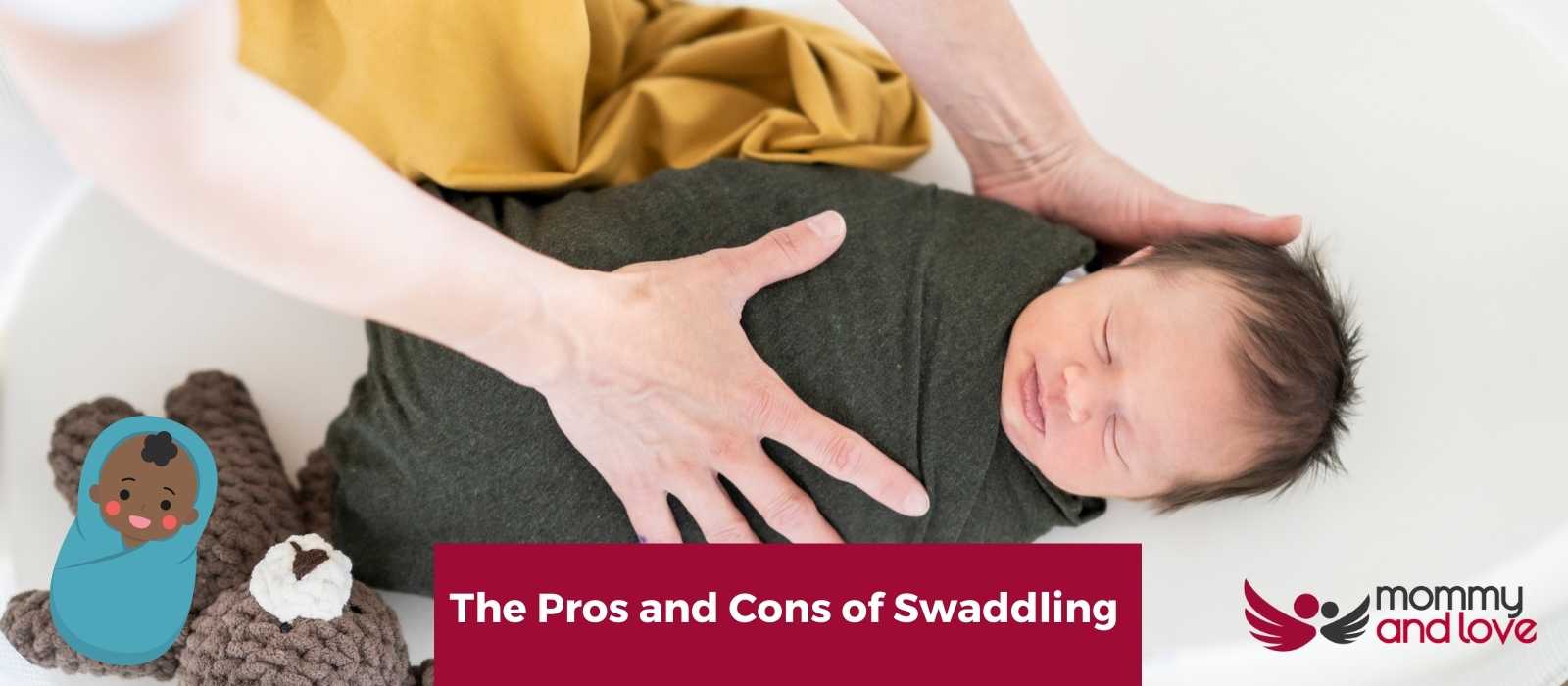Swaddling a newborn baby is a common practice in many parts of the world. But is it necessary? And are there any risks associated with swaddling? In this blog post, we will take a look at the pros and cons of swaddling your newborn.
No, you don’t have to swaddle a newborn baby but there are many benefits to swaddling a baby. Swaddling can help babies sleep better by providing a sense of security and calm. However, there are some risks such as hip dysplasia and SIDS so you have to ensure that you swaddle correctly.
Affiliate Disclaimer: As an Affiliate, we earn from qualifying purchases.
What Is Swaddling?
Swaddling is the practice of wrapping a baby in a breathable blanket or cloth so that they are snug and secure. It is often used to help calm and soothe a crying baby.
Swaddling can help your baby feel more secure and comfortable. It can also help to prevent them from startle reflex, which can wake them up. Swaddling is often used when babies are first born, but it can be used at any age.
What Are the Benefits of Swaddling My Little One?

Swaddling can provide numerous benefits for both babies and parents. It can help to soothe and calm a crying baby, and can also help the baby to sleep more soundly.
Swaddling can also help to prevent babies from startling awake and can reduce the risk of Sudden Infant Death Syndrome (SIDS).
As a parent, you may find that swaddling your baby helps you to bond with them, and can also make it easier to settle them down for sleep. Swaddling can also help to prevent your baby from scratching themselves and can keep them warm and comfortable.
Is Swaddling My Baby Safe?
Yes, swaddling your baby is safe. That being said, there are some general things to keep in mind when swaddling your baby.
- First, Make sure the swaddle is snug but not too tight. You should be able to slip your finger between the fabric and your baby’s chest.
- Second, be sure to use a thin blanket so that your baby does not get too hot. Use a light blanket or receiving blanket. A heavyweight blanket can increase the risk of SIDS.
- Third, only swaddle your baby for short periods of time.
- And fourth, always put your baby on his or her back to sleep.
If you follow these general guidelines, swaddling your baby will be safe and can be a great way to help your baby sleep.
Stop swaddling your baby when they start to roll over. Babies should be able to move their hips and legs freely to avoid hip dysplasia.
What is Hip Healthy Swaddling?

Swaddling is a great way to keep your baby warm and snug, but it’s important to do it correctly to avoid harming your baby’s hips. Make sure you use a light blanket that is large enough to wrap around your baby securely, but not too tightly.
You should also be careful not to wrap the blanket too tightly around your baby’s legs, as tight swaddling around the legs may lead to a slightly increased risk of hip dysplasia.
Swaddled babies should be able to move their hips and knees freely. If you notice your baby’s legs becoming straight or pushed together while swaddled, loosen the blanket a bit so they can move more freely. TheInternational Hip Dysplasia Institute launched their hip-healthy swaddling campaign where they encourage a loose bottom swaddle to allow for movement as tightly wrapping legs may cause issues.
Hip-healthy swaddling means making sure that your baby’s hips are in the correct position while they are wrapped. This position is called the “frog-leg” position, and it helps to prevent hip dysplasia.
Is Swaddling Good for Babies?
Swaddling can have many benefits for babies. It can help them feel warm and secure, and it can also help to calm and soothe them. Swaddling can also help the baby to sleep for longer periods of time.
In the newborn nursery in the hospital, most babies will be wrapped in a swaddling blanket for sleep periods. Many babies love the snug feeling of being all wrapped up. Some parents find it helpful to continue swaddling at home for naps and nighttime sleep.
If you decide to swaddle your baby, be sure to use a light blanket that is breathable. Swaddle your baby loosely, so that he or she can move his or her hips and legs. And always place your baby on his or her back to sleep to reduce the risk of SIDS
Can you Swaddle in the Summer?
The short answer is yes! You can swaddle your baby in the summer. There are a few things to keep in mind, though, to make sure you’re keeping your little one safe and comfortable.
First, make sure the room isn’t too hot. You don’t want your baby to overheat, so keep an eye on the temperature. Second, use a lightweight blanket or fabric. A muslin swaddle is a great option because it’s lightweight and breathable. Finally, don’t wrap your baby too tightly. You want them to be comfortable, so make sure they have some wiggle room.
Does Swaddling Help Babies Sleep?
Swaddling can help babies sleep better. It is a practice that has been used for centuries to help calm and soothe infants. When done correctly, swaddling can help your baby sleep for longer periods of time.
There are a few things you should keep in mind when swaddling your baby to ensure you swaddle safely. First, make sure the material you are using is breathable. Second, do not swaddle your baby too tightly.
You should also make sure that you do not wrap the swaddle too high on your baby’s chest as this can restrict their breathing. Lastly, always check on your baby while they are sleeping to make sure they are comfortable and not too hot.
At What Age Should You Stop Swaddling?
Most experts recommend stopping swaddling by the time baby is four months old. At this age, baby can start to roll over, which can be dangerous if they’re swaddled. Baby can also begin to free themselves from the swaddle, which could lead to suffocation.
If you want to continue swaddling after four months, make sure you’re using a light blanket and that baby’s arms and legs are free to move.
Baby can also begin to free themselves from the swaddle, which could lead to suffocation due to the loose blankets.
Is a Sleep Sack Better than A Swaddle Blanket?
There are a few key differences between sleep sacks and swaddle blankets that may help you decide which is right for your baby.
Sleep sacks zip up around your baby, preventing them from being able to kick off the covers in the middle of the night, they are effectively a wearable blanket.
Swaddle blankets, on the other hand, are typically used to wrap your baby snugly in order to help them feel secure and prevent them from flailing their arms during sleep.
So, which is better?
Sleep sacks or wearable blankets are a great option for babies who are starting to roll over, as they can not be kicked off and will stay in place. Swaddle blankets may be a better option for younger babies or those who need a little extra security. Ultimately, the best option is whichever one your baby is most comfortable with!
If you preventing are unsure which to choose, you can always start with a swaddle blanket and transition, to a sleep sack once your baby gets older. Whichever you choose, make sure to follow the safety guidelines to ensure your baby is safe and comfortable.
The Bottom Line on Swaddled Babies
It is important to make sure you are using the correct swaddle blanket and that you do not wrap it too tightly around your baby’s chest or hips. Swaddling your baby is meant to replicate the feeling of being in the mother’s womb, safe and secure and safe swaddling can help your baby feel just that.
Happy napping!






